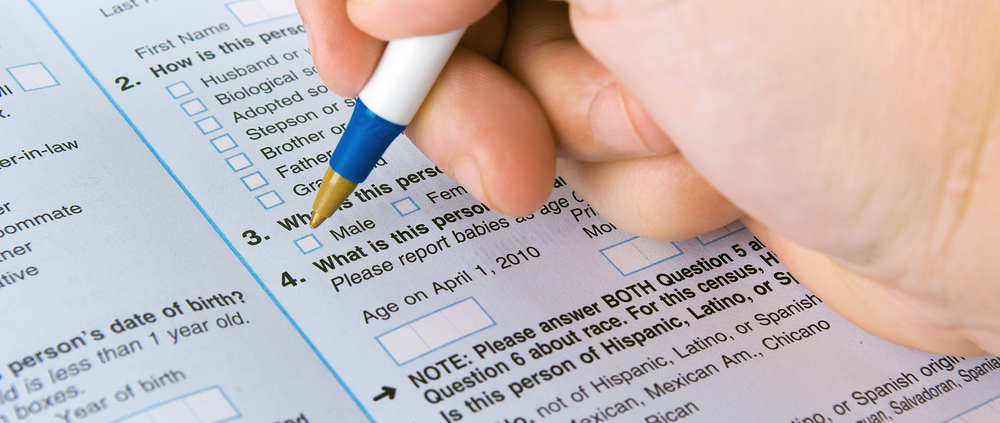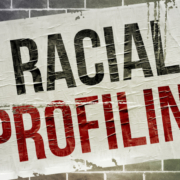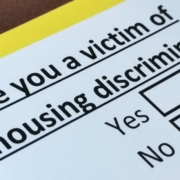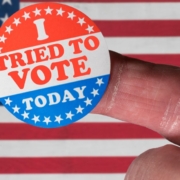The Impact of Reforming Census Questions About Race and Ethnicity
By Clara Fong, Kelly Percival, and Thomas Wolf
Changes proposed by the government would increase the accuracy, equity, and legitimacy of the decennial count.
The federal government has taken an important step toward modernizing the census and other federal surveys, with major potential benefits for civil rights. The White House’s Office of Management and Budget has issued a call for public comments on its plan to update the way federal surveys ask about race and ethnicity, setting the stage for the first comprehensive changes to those questions since 1997.
This long-awaited overhaul would go a considerable way toward producing data sets that can better serve our increasingly diverse country, and it signals that the federal government is getting more serious about much-needed census reform.
What does the federal government want to change?
The proposed changes involve Statistical Policy Directive No. 15, a policy that governs how federal agencies ask questions about race and ethnicity. This directive is part of a broader set of policies that work together to help ensure the quality and consistency of the data that agencies collect through their surveys. The Office of Management and Budget oversees setting and updating these directives.
What are the flaws in the existing policy?
The current directive has created a variety of problems for the surveys that must adhere to its standards, including the 2020 census. This is how the most recent census asked about race and ethnicity:
The first problem stems from asking people to answer separate questions about their ethnicity and race. Existing policy requires agencies to first ask whether someone is of “Hispanic, Latino, or Spanish origin.” It then asks them to select their race from five primary categories: White; Black or African American; American Indian or Alaskan Native; Asian; or Native Hawaiian or Other Pacific Islander. (Congress passed a law mandating that the census include a “Some Other Race” category.) But many individuals do not think of their race and ethnicity as distinct. For example, many Latino people see their primary identity as Latino; so, when asked a separate question about their race, they often end up selecting “some other race.” More than 26 million Latinos did so in 2020 — a number that climbs to 45.3 million when including Latinos who selected “some other race” along with one or more additional races. Large numbers of people reporting as “some other race” can create downstream problems. For example, enforcing civil rights law often requires people to identify as a specific race or ethnicity.
The policy also poses an issue for people who identify as Middle Eastern or North African. Currently, the directive encourages them to select “White” as their race and then write in their national origin. But as advocates for federal survey reform have observed since the early 1990s, people of Middle Eastern or North African descent do not identify as white. The lack of a specific category essentially renders the community invisible in federal data and denies Middle Eastern and North African Americans a collective voice in political representation.
The directive also lumps together groups of people who may have vastly different experiences and outcomes. For example, Asian American, Native Hawaiian, and Pacific Islander communities include over 50 detailed race groups with varying income levels, educational attainment, and health outcomes. The current directive allows but does not require disaggregated data collection of subgroup identities, so agencies often do not go beyond collecting the minimum standard. The lack of detailed federal data perpetuates the model minority myth by masking the important differences that exist across Asian American, Native Hawaiian, and Pacific Islander communities.
The current directive also includes outdated and sometimes offensive terms, such as “Negro” and “Far East,” to describe racial groups.
Many of these issues — like the lack of a Middle Eastern or North African category or the separate race and ethnicity questions — would have been addressed by changes proposed in 2016. But they were scuttled under the Trump administration, resulting in a 2020 census that still reflected decades-old guidance.
How would the federal government’s proposed changes address these issues?
First, the new directive would combine the race and ethnicity questions into one question. Census Bureau research has found that merging the questions and encouraging people to select as many categories as apply to them would lead to more detailed self-identification, fewer people selecting “some other race,” and fewer people skipping the question altogether.
Second, the directive would include a reporting category for people of Middle Eastern or North African descent in the combined race and ethnicity question.
Third, the directive would require federal surveys, where possible, to collect detailed identifications within each race and ethnicity category and standardize subgroup checkboxes and write-in options. For example, an individual could select “Asian,” and within that category, check a box to indicate that they are “Vietnamese” or write in their identification if it’s not reflected in a checkbox (e.g., “Cambodian”).
Fourth, the directive would remove outdated terminology, as well as discontinue the use of the terms “minority” and “majority” (in keeping with recent efforts by the Census Bureau to promote new ways of describing racial and ethnic diversity).
Here’s how the new census form might look if these changes are approved:
The request for comments on these changes will close on April 12, and the Office of Management and Budget plans to complete the revisions to the directive no later than the summer of 2024. After that, the Census Bureau will need to create, test, and refine a new questionnaire and work with community groups to ensure that it’s well administered in 2030.
What benefits would these changes have?
Federal surveys following the new directive would produce data that more accurately reflects how people describe their identities and their communities. This is critically important as the nation becomes more racially and ethnically diverse, more people identify as more than one race or ethnicity, and immigration and migration patterns change.
More accurate data, in turn, promises significant benefits at the federal, state, and local levels. For example, race and ethnicity data are used to ensure equal employment opportunities, enforce civil rights laws governing everything from redistricting to banking, assess the impact of policies on specific communities, and better tailor programs for public health, education, and other important services to the needs of specific groups. As a result, communities that have long been undercounted — or even statistically invisible — will see their political, legal, and economic power grow.
• • •
While modifying the format of the census form is key to improving the count, there’s still more to do. The Brennan Center’s report on improving the census recommends many legal reforms that Congress and the White House should consider. It’s high time to build on the growing momentum for census reform and advance the accuracy, equity, and legitimacy of future censuses.












Leave a Reply
Want to join the discussion?Feel free to contribute!